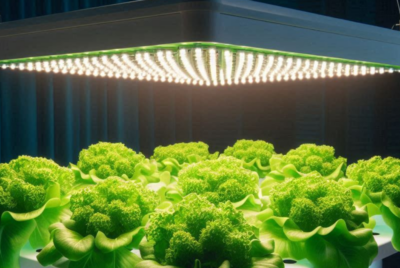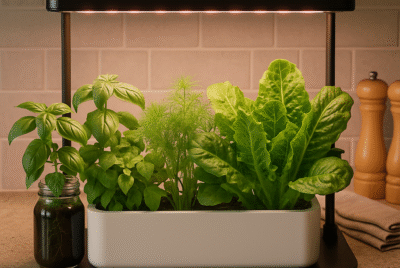Hydroponic Spinach: Nourishing Greens for a Healthy You
Welcome to the world of hydroponic spinach, where you can cultivate nutrient-rich greens and enjoy their health benefits all year round. In this article, we will explore the benefits, techniques, and varieties that will help you achieve successful hydroponic spinach cultivation.
Health Benefits of Hydroponic Spinach
Hydroponic spinach is a nutritional powerhouse packed with vitamins, minerals, and antioxidants. It is known for its role in promoting heart health, strengthening bones, boosting the immune system, and supporting overall well-being. By growing spinach hydroponically, you can ensure a continuous supply of fresh and nutritious greens to enhance your diet and lifestyle.
Selecting Spinach Varieties for Hydroponic Cultivation
Nutrient-Rich Spinach Varieties
Several spinach varieties excel in hydroponic systems, offering exceptional taste and nutritional value. Popular choices include Baby Leaf, Bloomsdale, Space, and Avon spinach. These varieties are known for their vibrant green color, tender leaves, and rich nutrient content.
Considerations for Variety Selection
When selecting spinach varieties for hydroponic cultivation, consider factors such as growth habit, disease resistance, and flavor profile. Choose varieties that suit your taste preferences, intended use (fresh or cooked), and the available growing space. Opting for disease-resistant varieties can help prevent potential challenges and ensure a successful harvest.
Setting up a Hydroponic System for Spinach
Choosing the Right Hydroponic System
Select a hydroponic kit that suits your space, resources, and preferences. Options include nutrient film technique (NFT), deep water culture (DWC), or vertical tower systems. Each system has its own advantages, so choose based on your specific needs and available resources.
Creating the Ideal Growing Conditions
Spinach thrives in cool and slightly shaded conditions. Set up your hydroponic system in a location that receives indirect sunlight or provide shade cloth to protect the plants from excessive heat. Maintain a temperature range of 50-75°F (10-24°C) to ensure optimal growth and prevent bolting.
Providing Proper Support for Spinach Plants
Spinach plants are generally compact, but they may benefit from support as they grow. Consider using trellises or plant cages to provide stability and prevent the plants from bending or falling over. Supporting the plants also facilitates air circulation, reducing the risk of diseases.
Nutrient Management for Hydroponic Spinach
Understanding Hydroponic Spinach’s Nutrient Requirements
Spinach has specific nutrient requirements to support its growth and nutritional development. It requires a balanced supply of macronutrients, including nitrogen (N), phosphorus (P), and potassium (K), as well as essential micronutrients. Providing the right nutrient composition is crucial for healthy spinach growth.
Monitoring and Adjusting Nutrient Levels
Regularly monitor the nutrient levels in your hydroponic system using electrical conductivity (EC) and pH meters. Adjust the nutrient solution accordingly to maintain the appropriate nutrient balance. Keep an eye on the plant’s response to nutrient changes and make necessary adjustments to optimize growth.
Common Nutrient Deficiencies in Spinach
Watch out for common nutrient deficiencies in spinach, such as nitrogen deficiency (yellowing leaves), iron deficiency (yellowing between leaf veins), and magnesium deficiency (yellowing of older leaves). Address deficiencies promptly by adjusting the nutrient solution or supplementing with specific nutrients to ensure healthy growth.
Watering and Irrigation Techniques for Hydroponic Spinach
Proper Watering Practices
Maintain proper watering practices to promote healthy spinach growth. Water the plants when the growing medium starts to dry out but avoid overwatering, as it can lead to root diseases. Ensure that the growing medium remains moist, but not waterlogged, for optimal root health.
Implementing Irrigation Systems
Consider implementing an efficient irrigation system in your hydroponic setup. Drip irrigation or an ebb and flow system can provide controlled water delivery, preventing water wastage and ensuring even distribution. Automated timers can help maintain consistent watering schedules.
Managing Water Quality and pH Levels
Ensure that the water used in your hydroponic system is of good quality. Filter or treat the water to remove any impurities or excess minerals that may hinder plant growth. Maintain the pH level within the recommended range for spinach, typically between 6.0 and 7.0, to facilitate nutrient absorption.
Temperature and Lighting Requirements for Hydroponic Spinach
Optimal Temperature Range for Spinach
Spinach thrives in cool temperatures, making it suitable for year-round hydroponic cultivation. Maintain a temperature range of 50-70°F (10-21°C) during the day and slightly cooler temperatures at night. Providing a consistent temperature helps promote healthy leaf development and prevents bolting.
Providing Adequate Lighting for Growth
Spinach requires moderate to high light intensity for optimal growth. If growing indoors, ensure the plants receive at least 12-14 hours of light each day. Position high-quality LED grow lights at an appropriate distance to provide sufficient light intensity for photosynthesis.
Adjusting Lighting Schedules for Optimal Yield
To maximize yield and prevent bolting, consider adjusting the lighting schedule for your hydroponic spinach. Gradually reduce the light duration to 8-10 hours per day as the plants approach maturity. This simulates the natural progression of daylight hours and encourages healthy leaf production.
Pruning and Harvesting Techniques for Hydroponic Spinach
Benefits of Pruning and Maintaining Spinach Plants
Pruning spinach plants helps maintain their compact shape, improve air circulation, and enhance light penetration. Remove any yellowing or damaged leaves to prevent the spread of diseases. Regular pruning also promotes the growth of new leaves and extends the overall harvest period.
Harvesting Spinach Leaves for Continuous Production
Harvest spinach leaves when they reach a desirable size, typically 4-6 inches (10-15 cm) in length. Use sharp scissors or pruning shears to make clean cuts just above the base of the leaves. Harvest outer leaves first, allowing the inner leaves to continue growing for a continuous supply of fresh spinach.
Managing Pests and Diseases in Hydroponic Spinach Systems
Common Pests Affecting Spinach
Spinach can be susceptible to pests such as aphids, leaf miners, and flea beetles. Monitor your plants regularly for signs of pest infestation, including distorted leaves, holes, or visible insects. Early detection allows for prompt intervention and prevents pests from causing significant damage.
Organic Pest Control Methods
Implement organic pest control methods to protect your hydroponic spinach and maintain a healthy growing environment. Introduce beneficial insects like ladybugs or lacewings that prey on common pests. Neem oil or insecticidal soap sprays can also be effective against soft-bodied insects.
Preventing and Managing Diseases
To prevent diseases in your hydroponic spinach system, maintain good sanitation practices. Keep the growing area clean, remove any dead plant material promptly, and practice proper hygiene. Provide adequate airflow and ventilation to reduce humidity levels and minimize the risk of fungal diseases.
Enjoying the Goodness of Hydroponic Spinach
Culinary Uses for Hydroponic Spinach
Hydroponic spinach offers endless culinary possibilities. Enjoy it raw in salads, sauté it as a side dish, blend it into smoothies, or incorporate it into delicious recipes like spinach lasagna, spinach and feta stuffed chicken, or creamy spinach soup. Its versatility and mild flavor make it a perfect addition to various dishes, providing a nutritional boost and vibrant color.
Nutritional Recipes and Serving Ideas
Discover exciting ways to incorporate hydroponic spinach into your meals with these nutritious recipes:
Spinach Salad with Strawberry Vinaigrette: Toss fresh hydroponic spinach leaves with sliced strawberries, feta cheese, and almonds. Drizzle with a homemade strawberry vinaigrette for a refreshing and healthy salad.
Spinach and Mushroom Omelette: Sautee hydroponic spinach and mushrooms with garlic and olive oil. Fill an omelette with the mixture and sprinkle with grated Parmesan cheese for a satisfying and protein-packed breakfast.
Spinach Pesto Pasta: Blend hydroponic spinach, fresh basil, garlic, pine nuts, Parmesan cheese, and olive oil to create a vibrant and flavorful pesto. Toss with cooked pasta for a quick and nutritious meal.
Conclusion
Growing hydroponic spinach allows you to enjoy the nutritional benefits of this leafy green all year round. The soil-less approach proves to yield better results, through experimentation with soil as a comparative growth medium. By following proper techniques in setting up your hydroponic system, managing nutrients and water, and preventing pests and diseases, you can achieve successful and bountiful spinach harvests. Embrace the versatility of hydroponic spinach and elevate your meals with this healthy and delicious green.
FAQs
1. How long does it take for hydroponic spinach to mature?
It typically reaches maturity within 25-40 days from planting, depending on the variety and growing conditions.
2. Can hydroponic spinach be grown outdoors?
While often grown indoors, it can also be cultivated outdoors in suitable climates. Ensure the growing conditions meet the temperature and light requirements for optimal growth.
3. Can I reuse the hydroponic nutrient solution for spinach?
It is generally recommended to refresh the nutrient solution every 2-3 weeks to maintain optimal nutrient balance for spinach growth. Regular monitoring of nutrient levels is crucial for healthy plants.
4. How often should I prune hydroponic spinach plants?
Prune plants as needed to remove yellowing or damaged leaves. Regular pruning encourages new growth and extends the overall harvest period.
5. Can I grow hydroponic spinach alongside other leafy greens?
Yes, they can be grown alongside other leafy greens like lettuce or kale. Ensure the growing conditions and nutrient requirements of the companion plants are compatible.
*We may earn a commission from purchases made through our links, at no cost to you. This does not affect our product recommendations. Please see our disclosure to learn more.




